Tuesday 4th July – Semenggoh Wildlife Centre
Our guide book recommended two places to see orangutans and having spent a bit of time looking at both on the internet, Semenggoh looked like the best place to visit (funnily enough it was also the one our taxi driver had suggested). Founded in 1975, the orangutans (about 1000 of them) here are cared for in the Semenggoh Nature Reserve with the aim of rehabilitating them so they can be released into the wild. Like the Gibbon Rehabilitation Project in Thailand, a lot of them have been rescued from the illegal pet trade or have been brought in orphaned or injured. Feeding times were at 10am or 3pm so we opted for the afternoon slot, which meant setting out into the hottest part of the day. After the dinghy ride, the walk and the initial oven-like temperature inside the car, the air conditioning (once it kicked in) was glorious. It took about an hour to get there, we arrived at a little after two. We paid the amazingly cheap 20 ringgit admission fee (about £1.80 each) at a ticket booth and then drove quite a long way down to the car park. It would have taken at least 40 minutes to walk to it, yet on the narrow road down we passed signs and entrances for jungle treks, arboretums and rainforest walks – only accessible by walking back to them from the car park. All good value for money but we certainly couldn’t have done all those extras in the heat that day.

A building with a gift shop and information centre was at the entrance to the park. On the walls were pictures of some of the orangutans with their names and backstories. We’d barely started reading them when a ranger appeared to beckon us over to a nearby path where, he excitedly informed us, an orangutan could be seen on the branches of a tree. A few people were already there looking up in hushed admiration, with mobile phones held aloft to capture the image. Another ranger told us we were very lucky to see one this close as they don’t often venture too far away from their area in the rainforest. We spotted it soon enough high up on the ropes between the trees, with its bright orange back to us, nonchalantly eating bananas and throwing the skins on the ground.

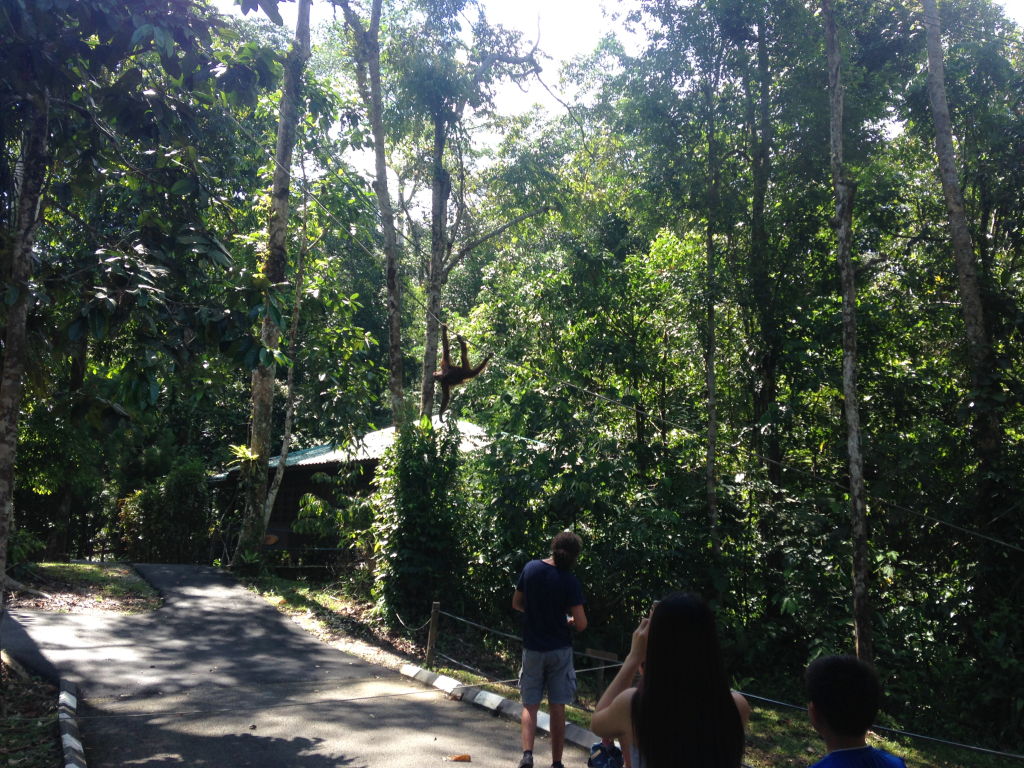
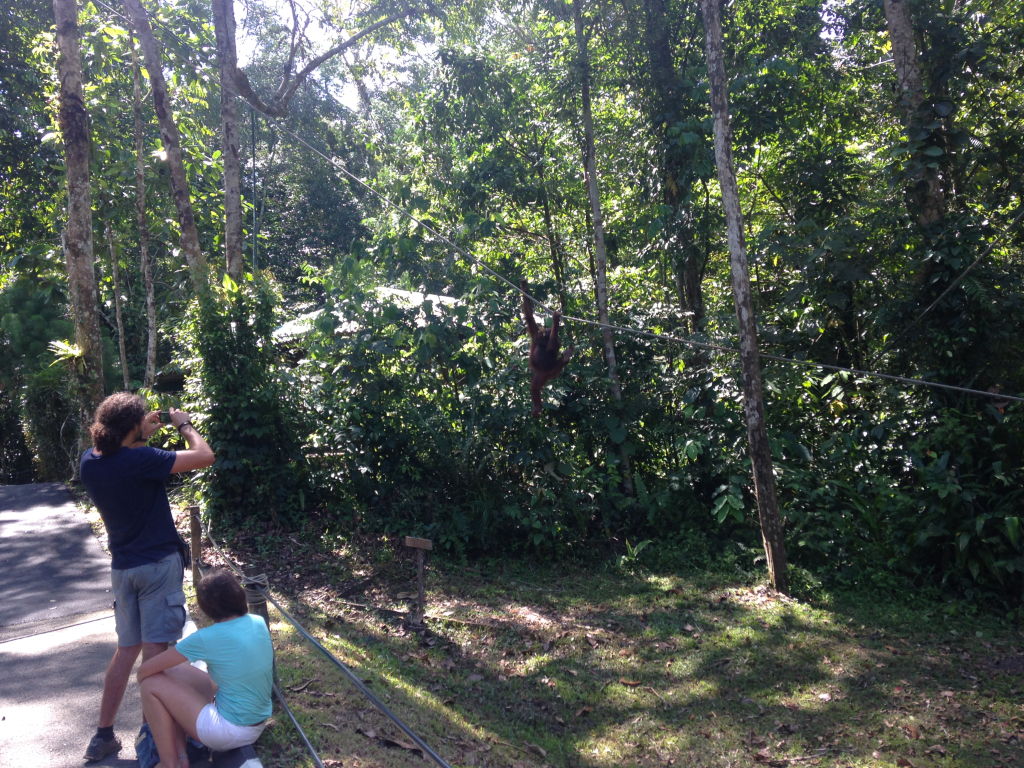

This orangutan entertained us for a good half an hour, swinging on ropes, eating, and occasionally turning round to stare at us staring at him. The heat eventually forced us into a nearby wooden shelter where we could still see him. More arrived and gathered near to us as the appointed feeding time approached. A ranger appeared bearing more food in a sack, from which he passed coconuts, bananas and hard-boiled eggs up to the orangutan’s eager hands as he shinned down to grab it. At one point he had a bunch of bananas in one hand and a coconut in the other. After making quick work of the bananas, he proceeded to tear the hair off the coconut and then banged it against the trunk of the tree until it cracked open. He tipped the milk into his mouth, spat a large mouthful out, banged it some more and then gnawed at the white flesh, chomping while staring down at the ranger. Spying the eggs, he took some of those and spat out the shell to scoop out the hard boiled insides with his tongue. The eggs were his particular favourite I think judging by the amount he put away 🙂


At 3 o’clock we gathered to listen to a talk from the ranger concerning precautions and regulations regarding the orangutans. The alpha male, Ritchie, we were told, does not like loud noises and has a very bad temper. Orangs have very sharp teeth and are known to be strong: I don’t think we needed to be warned not to antagonise him! We followed the ranger along a narrow path with high jungle on either side of us to the feeding zone.



There were about 20 of us in the group altogether, including children – made up of Russians, French, Chinese and Indians of varying ages and I was impressed with the decorum of every one of them. The kids were well behaved, we were all respectful of our surroundings and we were all interested in the whole experience. When we reached the viewing platform, a couple of orangs were already on the wooden structure tucking into an array of bananas, nuts and fruit. We photographed and filmed them, along with the little forest squirrels who were also making the most of the feast. It was fantastic to notice a female with a baby clinging to her tummy. Later we watched the youngster learning how to peel bananas and being taught how to climb by its mum.




One young couple who had been keen to linger and watch the activities, had missed the last bus back to Kuching and asked if we’d mind giving them a lift. They were on a travel break from their careers, he was a doctor from The Ivory Coast and she from Bordeaux, France, studying animal psychology and had met during their travels. They were as impressed with our experiences and history as we were with theirs – it’s one of the many pleasures of travel to swap stories and backgrounds with the people you meet. We dropped them off at the waterfront and spent the rest of the evening in Kuching, shopping and walking – walking so much that my out of practise legs and feet protested violently. We ate in a Chinese hawker market. I keep hoping to find a stall like the one I had been to in Penang where the food is freshly cooked in front of you, but dishes from this one were displayed in uncovered bain-maries, school dinner fashion and there was a tendency to make you feel rushed to choose what you want. The food was lukewarm and the rice was cold and rubbery – cheap, but not very appetising.

Wednesday 5th July
Today’s excursion was to the Sarawak Cultural Village – a ‘must see’ according to most travel guides and sites on Kuching. This will be the venue for the Rainforest Music Festival weekend on the 14th July so it seemed a good opportunity to check it out as it’s not too far away. The cultural village is comprised of seven authentically replicated houses and huts that were typical of those inhabited by the seven indigenous tribes native to Sarawak. There are daily performances of dances and rituals as well as demonstrations of their traditional chores, games and ceremonies. When we arrived at the ticket office, we were momentarily lost for words when we were offered the reduced price for seniors! Oh well it had to happen one day I guess.

Clutching our ‘passports’, a handy little book containing info on the tribes and some of the myths and legends associated with them, we ambled into the park behind a group of loud and animated Chinese visitors. The first house we visited was the Chinese Farmhouse and one of the men in the group explained to us that he was showing family members how much it resembles his grandparents’ house that he used to visit as a child in the 1960s. The family exclaimed and laughed and shouted loudly to each other as they posed for pictures in every part of it. We had a quick look around that house and then discreetly headed off in the opposite direction for a quieter visit.



We climbed some precarious staircases during our visit to the longhouses. They are reconstructed from thick logs (a notched log as it’s described in the book) – the steps hewn neatly into the wood to form the footholds but they seemed to be made for tiny feet and it would have been easy to slide down and do yourself a mischief if you weren’t careful, as the pictures below show.


The huge longhouse itself consists of an open veranda which formed the communal, domestic area for the villagers – up to twenty families could live under one roof. From this outer veranda, a smaller inner veranda is the ‘street’ from which doorways lead to the individual family rooms (all set out as they would have been if inhabited). It’s a bit like a commune in a big tree house. Most of the communal areas had people demonstrating various traditional craft-making skills.



We watched items such as swords, baskets and musical instruments being created, and in one house we saw clothing made out of tree bark. The demonstrators were all keen to chat and to explain the histories of the houses and the customs and rituals of the tribes.

I was particularly fascinated with the headhunting custom practised by the Iban tribe. After a battle, a warrior would take a single head from one of the dead and display the skull in the longhouse communal area in recognition of the warriors’ role in protecting the community. They believed spiritual benefits were derived from the heads if sacrifices in the form of pigs or chickens were made to them, while the souls of the unfortunate decapitated people were said to protect the households they graced. The heads also played an important part in mourning rituals and when headhunting was outlawed in the 19th century and heads became scarcer, a head was often passed around to bereaved villagers. The heads we saw hanging from the rafters on our visit were real (we think).

One area had various stalls with some of the handicrafts on sale. The products were beautiful and unusual and it would have been easy to spend a fortune there, but I restricted myself to one item made from a coconut: a mum and baby orangutan money box. The whole place was very well put together in a lush jungle setting, complete with monkeys on the roofs of the buildings and in the trees.
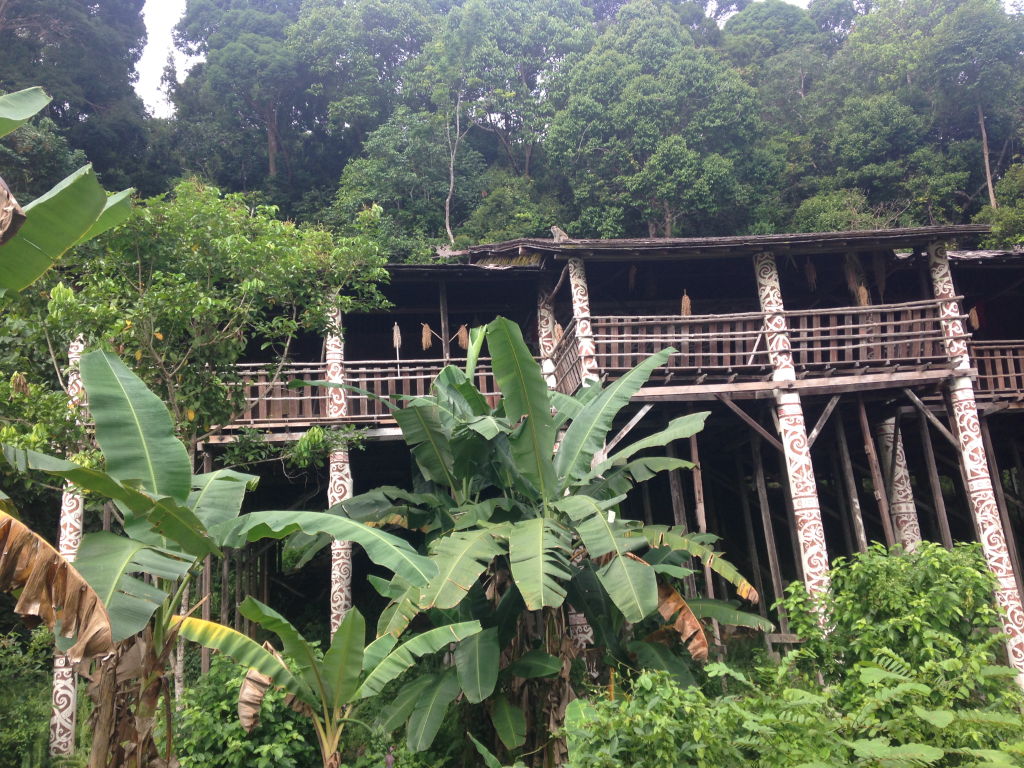

We ended the visit in a theatre where we watched a vibrant song and dance performance depicting stories associated with the Sarawakian tribes and their daily lives. Leaving the village, we wandered down to the beach and had a drink in a bar there watching a torrential downpour of rain from the balcony. These downpours would continue all night.
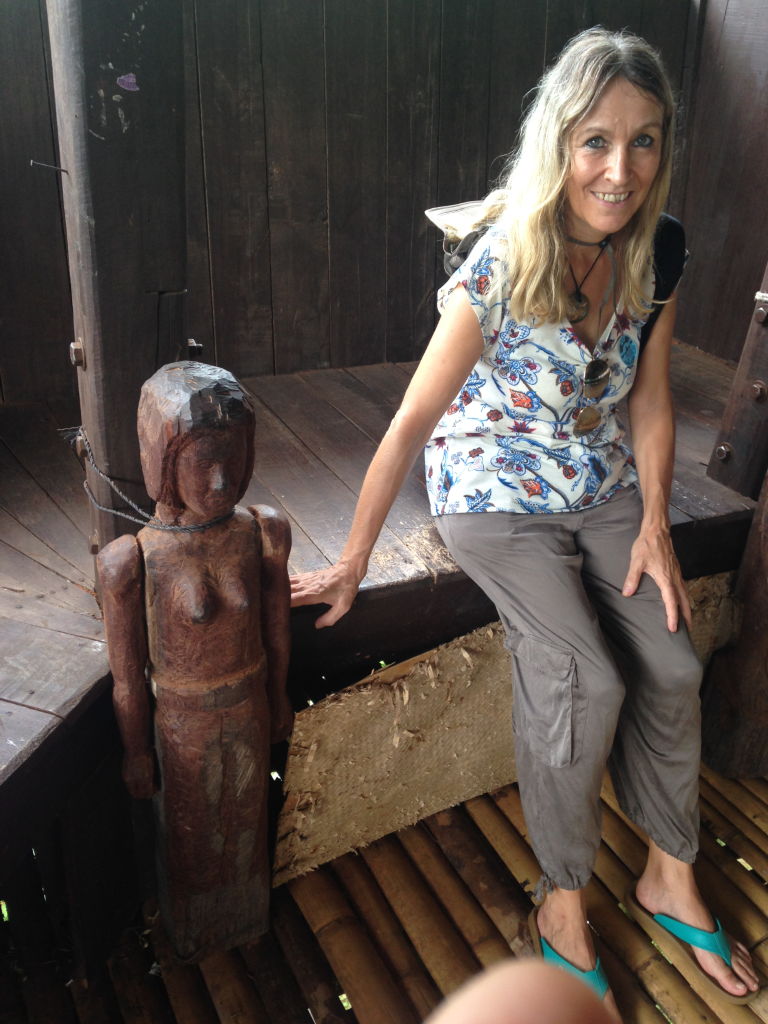


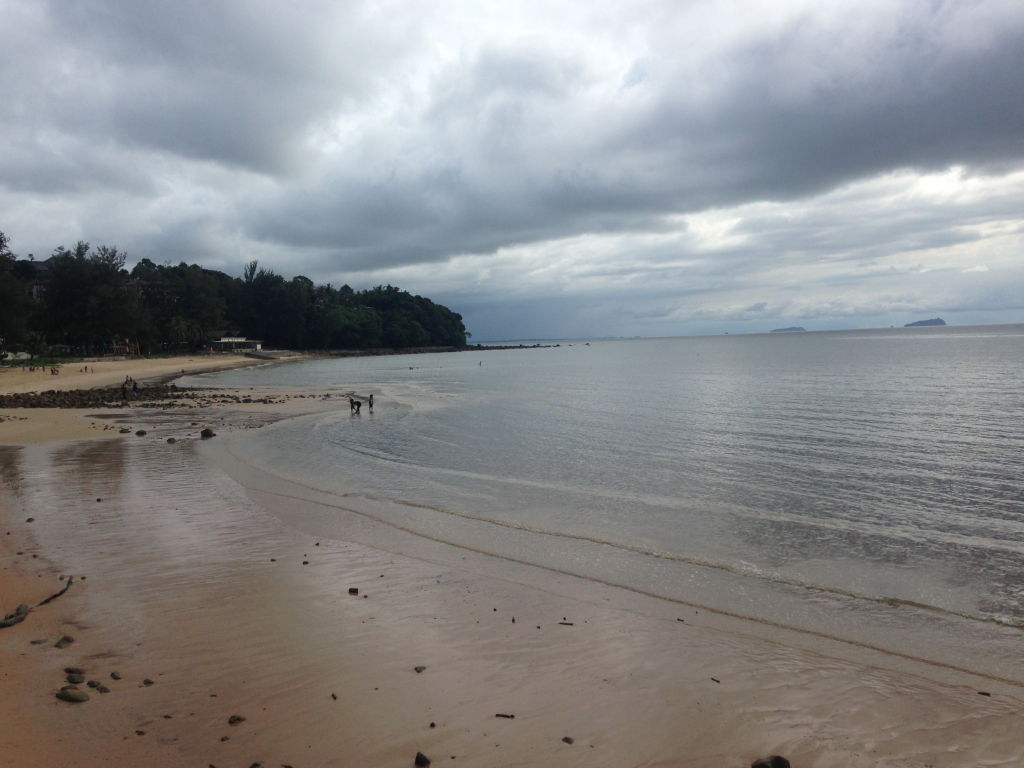
Thursday 6th July – Two Museums
Heavy rain in the night filled the dinghy which we keep suspended along the starboard rail. Paul had to get up in the night to empty it to prevent it straining the rope it was suspended on. Each time I woke up I could hear the rain thundering on the roof, but by late morning when we got up and got ready to head out again, the sun had chased all the clouds away. Our excursion for today was to The Cat Museum in Kuching. It’s widely believed that Kuching was named after the Malay word for cat; ‘kucing’. Another theory claims that it comes from the Chinese word for port; ‘cochin’. Whatever the truth about the origins of its name, the city has embraced the association with cats (a wise choice given their global popularity, and ports just don’t have that ‘cute’ factor). There are statues and sculptures of cats all over the city, and shops and cafes have made use of the theme (The Cat Gallery Gift Shop, Meow Meow Cat Café). The local radio station is called ‘Cats FM’, walls bear cat graffiti and T shirts and souvenirs are emblazoned with cats of all descriptions. Hardly surprising, then that there is a museum devoted to them. Housed on the bottom floor of the City Hall, it’s about 20 minutes’ drive away from the city, is free and is reported to contain over 4,000 artefacts devoted to cats. After checking that it also had wifi and seats, Paul agreed we should pay it a visit 😉
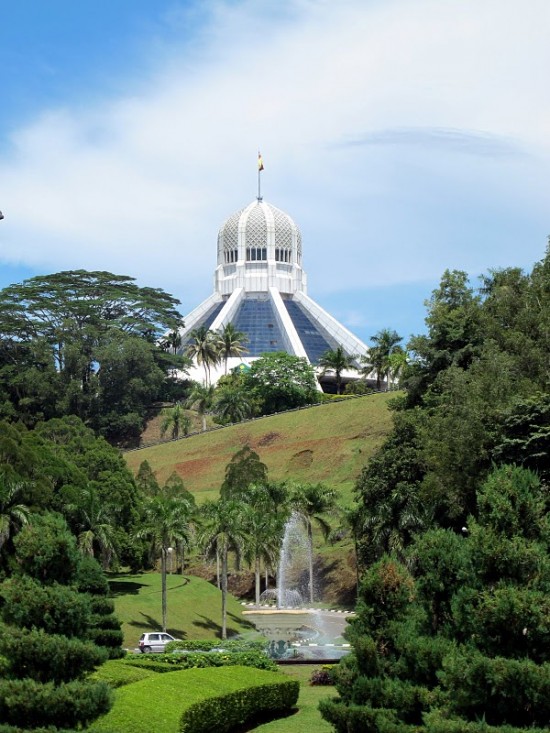
The building reminded me of Liverpool’s catholic cathedral in its design and is set in beautiful lush green countryside. Inside, the four galleries are all on one floor with gift shops dotted around. Once Paul had sat himself down with his phone (he said he might join me later), I was the only one wandering around. It’s a quirky place. I wasn’t sure if I liked it or not at first: it seemed a bit random with its choice of exhibits. For instance, there was an area entirely devoted to Garfield, the American cartoon cat which seemed a bit incongruous amid all the displays of stories of cats in history, literature, superstitions and legends etc. One wall had pictures of cats fighting, cats eating and cats mating and ended with the question ‘do cats kiss?’. I did enjoy it actually because I spent a long time reading the information on the boards and studying the exhibits.
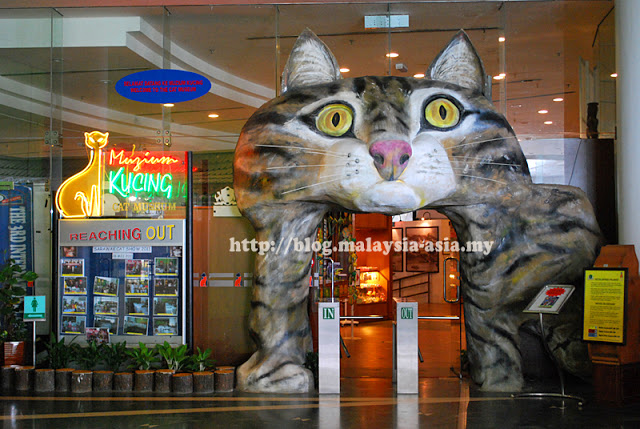
Paul, meanwhile had got so engrossed in his work he didn’t have time to look around, much to his disappointment 😉 We moved on to the next museum on the agenda. The Sarawak Museum is in Kuching centre, and houses local native arts and crafts along with specimens of local mammals and insects collected by the famous naturalist, Alfred Russel Wallace. We only had an hour before it closed, but it was an interesting hour. The building is a bit of a museum piece in itself, in a charmingly old-fashioned way. It had several dusty glass cabinets with stuffed animals, reptiles and birds in them, and wooden floors and quiet, dimly-lit rooms, like museums used to be in the UK before they became noisy, brightly lit and interactive. We ambled round, reading about the indigenous people of Sarawak and their myths and legends. These would delight any schoolchild with the tales of poison darts, sacrifices and of princesses turned into mountains. The masks they wore for battle were pretty amazing too. We got turfed out in the end because the attendant was ready to close.



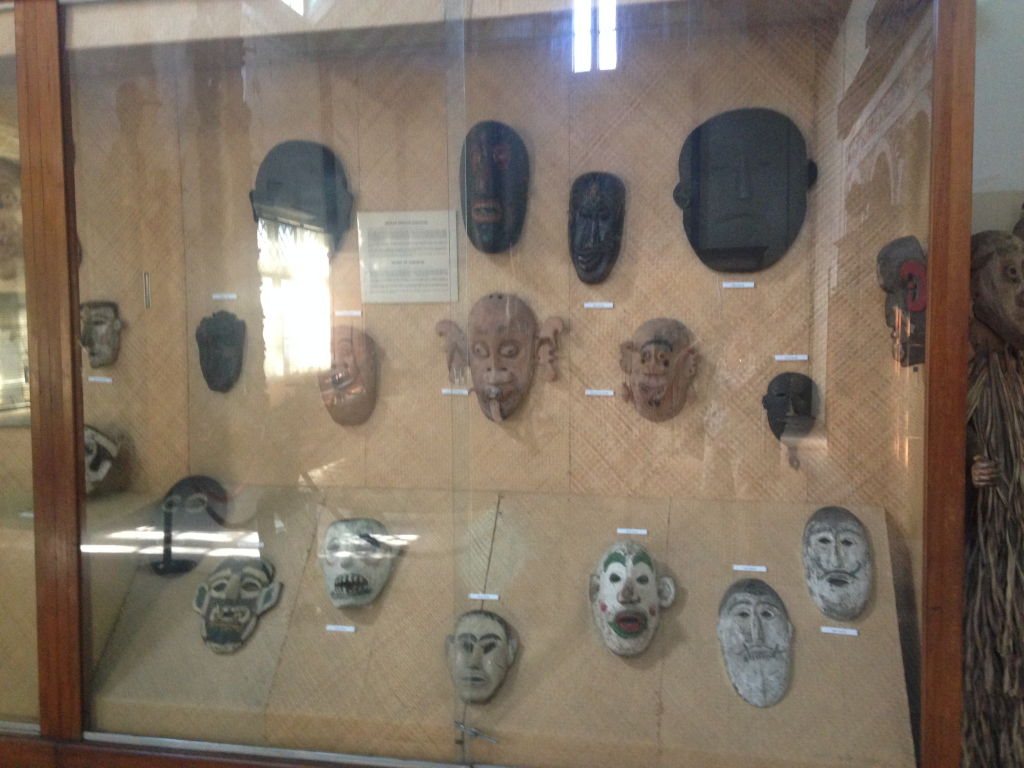
A walk in the park was next. Kuching’s well-kept park is popular with joggers and one area was full of people doing tai chi or something very like it. From there we returned to the riverfront to get the ferry across to the other side, which took all of two minutes and cost 20p. I was surprised to discover it’s a lot less plush on the other side of the river. Instead of smart bars, hotels and restaurants, this riverside has a few shops and cafes that are clearly more for the locals than aimed at tourists. It’s probably what the more developed side used to look like. Things could change once the bridge that is currently under construction is finished.

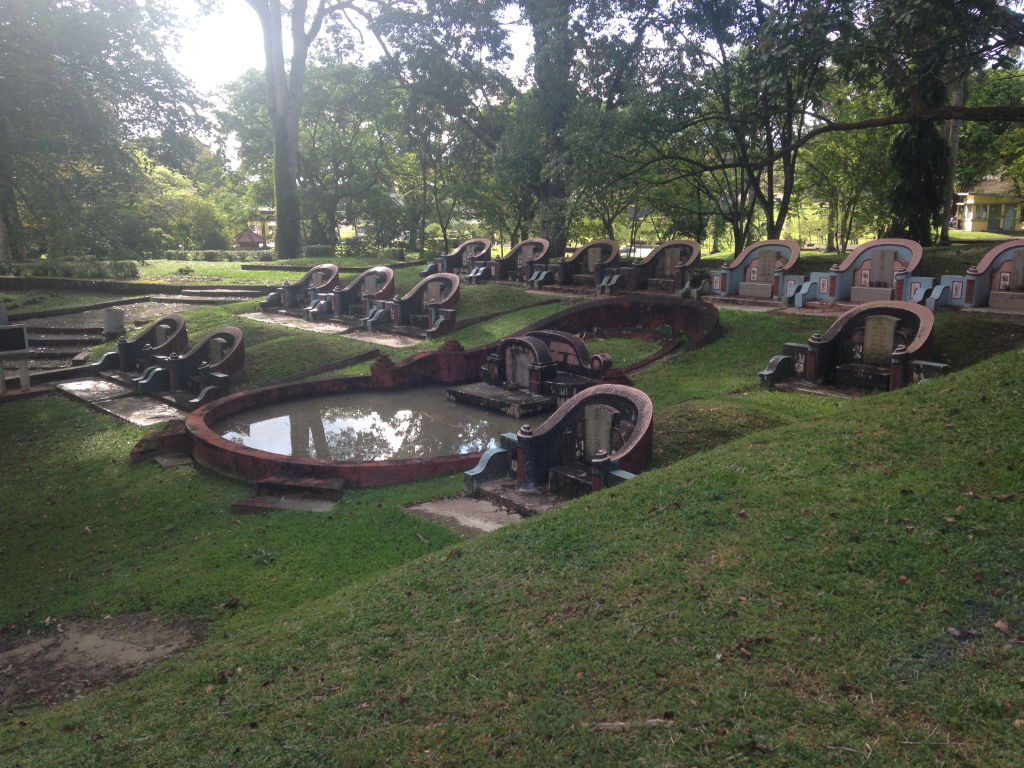

By the time we’d found somewhere to eat (a tapas bar in a smart square on the plush side), it was dark and when we reached the fish farm I was eager to flake out on the boat. Before I could do that though, we had to heave the dinghy out of thick mud where it had gone aground. Somehow, we’d miscalculated the tide times and it took both of us to drag it to the other side of the small pontoon where the water was just deep enough to take our weight and motor across. Paul said the alternative would have been to wade through the mud, pulling the dinghy until we reached the water. There is no way I would have done that. I would have happily sat on the wooden pontoon until morning before putting my legs in that creature-laden mud! I resolved to double check the tide times for the next day’s trip.

What amazing experiences!x
Lovely to hear about the orangs xx